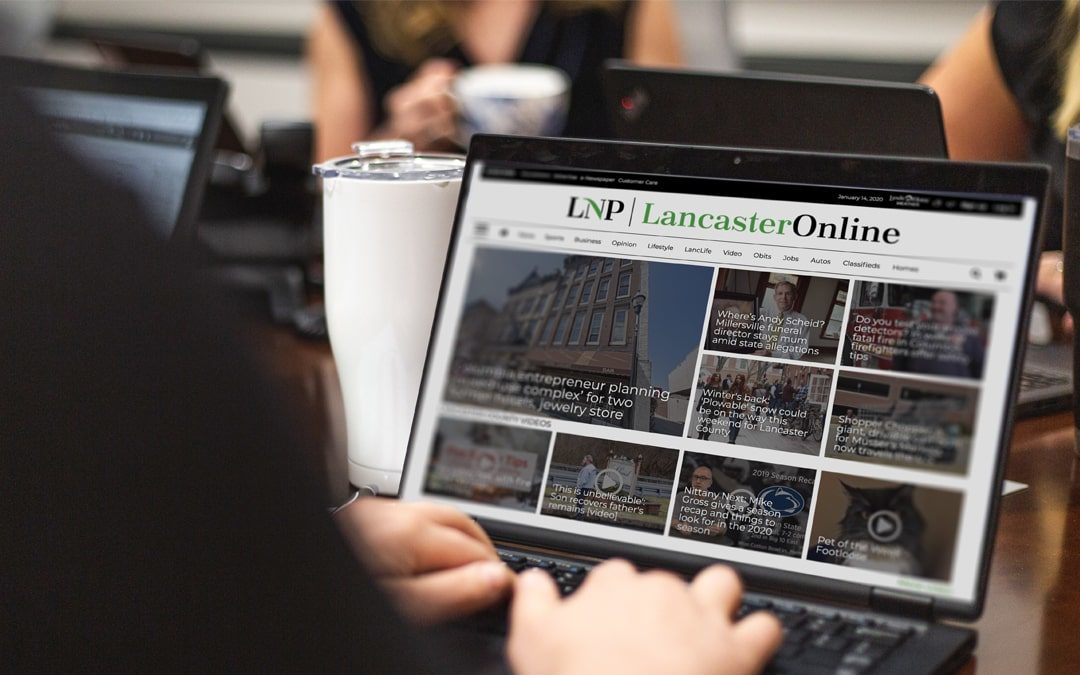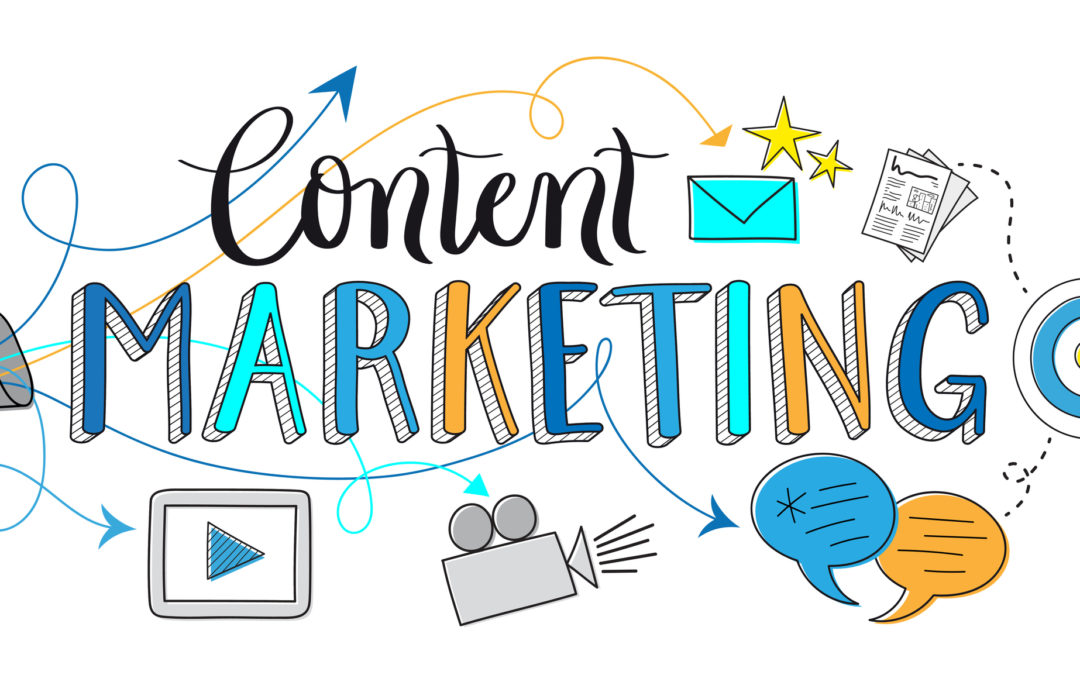
What You Don’t Know About Advertising on LancasterOnline
With so many digital marketing opportunities available, the choices can be overwhelming. And with so much online activity, it’s easy to overlook local digital options. However, there is one online advertising option in Lancaster County that you won’t want to overlook.
Many businesses and organizations know that LancasterOnline is the digital companion to LNP, Lancaster, Pennsylvania’s daily newspaper. But fewer people realize that this digital arm of LNP can offer more news, information, and lifestyle reporting than any other website in the area.
Others are surprised to learn that, just like the LNP newspaper, LancasterOnline features reliable reporting on local and national news and issues. Like the print edition, it also includes home and lifestyle features.
Not only does LancasterOnline offer both subscribers and non-subscribers access to hundreds of informational videos and exclusive, online-only content, but it also provides an entire suite of innovative advertising tools.
Remember This One Thing
Even if you find that all of the tools and strategies we discuss in this article are hard to commit to memory, there is one thing that you make sure you remember:
We guarantee that your ads will be shown alongside compelling, credible content that you (and your potential customers) can trust. LancasterOnline maintains the same publishing standards as our print edition.
And unlike many of the other digital options bumping around, only LancasterOnline is backed with over 225 years of experience growing local businesses.
If you’re a business in Central PA, you should know that when you choose to advertise on LancasterOnline, our experienced media solutions strategists will help you create a digital marketing program designed to reach your best customers right here, right now.
Request a free consultation with our digital marketing experts.
Do You Know Who Reads LancasterOnline?
LancasterOnline is the most popular and well-read website and app in the area. In fact, LancasterOnline attracts over a million individual users every month, which includes more than 11,000 paid “all-access” premium subscriptions and over 50,000 downloads of our app.
Did You Know that Young Lancastrians Love LancasterOnline?
Yep, it’s true. One third of our readers are ages 25-44. While the average age of people who consume print and broadcast news is getting older and older, LancasterOnline continues to attract younger readers.
More than a 13% of our readers are 25-34. Another 21% is 35-44. That means that no matter which age is most important to your business, you can reach them on LancasterOnline.
Marketing Secret: Get More Lancaster County Customers To Your Door With Our Mobile Advertising
It’s no secret that mobile marketing is more important than ever. In fact, in 2019, Google reported that
“Mobile searches for ‘store open near me’ (such as ‘grocery store open near me’ and ‘auto parts store open near me’) have grown by over 250% in the last two years.”
Mobile devices in Lancaster, and all over the world, have become more than cameras and social media portals (and, oh yeah, phones.) Nowadays, these little pocket computers are referred to as smartphones. In fact, if you have an iPhone8 or better, you have more than 10x the computing power at your fingertips than the Cray-1 Supercomputer offered in 1976 (and the Cray-1 cost 8 million dollars.)
Our smartphones also feature location services that, when combined with the sophisticated algorithms of Google Business, make it simple for people to find businesses and restaurants in seconds. Smartphones are now the number one way shoppers find business locations near them.
With so many people spending time on their smartphones, it’s no surprise that more than 75 percent of LancasterOnline readers access our site via mobile. We make sure all of our ads and content are formatted to be mobile-friendly. That means it’s easy for people to read our information and click on our ads. All this comes together to make LancasterOnline an excellent advertising platform for retailers, restaurants, grocery stores, pharmacies, car washes, auto repair shops, auto dealers, health services, salons, health clubs, travel destinations, and much more.
Did You Know We Can Help You Build Your Databases?
If you’re a business that wants to build a qualified email or mailing list, LancasterOnline can help. Our media solutions specialists can help you develop online contests, digital sweepstakes, or interactive quizzes that will motivate potential customers to trade an email address for a chance to win a prize.
We’ve helped dozens of local businesses create quizzes and contests that drive opt-ins. And when your company offers your product or service as the prize or giveaway, you know that people who enter want what you’re selling. Your award acts as a lead qualifier, so every person who registers is a good potential customer. And, we handle opt-ins in a fully transparent manner. We are compliant with all privacy rules and regulations.
Did You Know All of Our Innovative Ads are Designed for Maximum Impact?
Every ad space we offer on LancasterOnline is designed to be visible and attractive. We’ve developed ads and promotions that make people want to click on the ads and find out more about your business.
One of these unique ad offerings is the Homepage Takeover. If you’re looking to wow your customers and create a message that can’t be ignored, the Homepage Takeover ad package is for you. This exciting format places your ads in four different spots on the first page they see.
Ads are in four different sizes to add visual interest and excitement. Every ad is clickable so that it can link to your website or landing page. And you can use animation or insert video to add even more sizzle to your commanding ad presence.
Reveal ads are another interactive element that is highly visible and engaging. Reveals live at the top of the page, and you get full share of voice for that spot for 24 hours. Again, animation or video can be used. The reader sees your ad immediately on every page of the site.
However, some businesses have a story to tell and need more space to explain. If you want to go deep and give your customers a chance to learn all about your business, then Collaborative Content might be right for you. Our media specialist will recommend topics, or you can choose your subject. Our writing and design team then works to create professional articles that relate to your business or your newest offering. When you choose this type of advertising on LancasterOnline, you get a long-format, high-impact article that people all over Lancaster County will want to read.
Have you Tried Auto Marketing on LancasterOnline?
When you list in LancasterOnline’s Auto Section, your inventory will move quickly. We make it easy for users to find the car, truck, or SUV of their dreams. Motor Monday is a favorite of our print edition, and we also run it on LancasterOnline. When you combine print and digital publications, you get twice the exposure.
This is Not Your Father’s Recruitment Ad
Digital marketing has made it easier than ever to find the right people for employment needs. Our experienced recruitment media specialist marries our multimedia platforms with data from the Bureau of Labor Statistics to find people locally or nationally. The LancasterOnline team can also use geofencing, search engine optimization, email campaigns, and more to get you hard-to-find applicants. Before you start your next hiring campaign, make sure to discover our full list of unique recruitment services.
Do You Know How to Tap Into the Power of Digital Sponsorships?
Work with one of our media solutions specialists to find out if an online sponsorship with a prominent digital presence is right for your business. LancasterOnline regularly offers opportunities for a company or organization to become the sponsor of a page, event, or contest. In many cases, you can request to be the only sponsor in your category. With other opportunities, you may be able to secure sole sponsorship. Sponsorship features may include prominent logo placement, co-branded sponsorship name, your brand in ads promoting the page, event, or contest, ads on LancasterOnline, and more.
Our media solutions strategists will help you create a customized approach that makes sense for your business. When you become a LancasterOnline sponsor, you’re able to link your brand with credible content that people trust. And that’s good for business.
Reach Targeted Audiences With Our E-Newsletters
When you choose to run a sponsorship ad in one of LancasterOnline‘s e-newsletter, you get to choose among a selection of highly-targeted interests. LancasterOnline sends out daily or weekly emails to audiences who have requested email updates on breaking news, business, sports, food, entertainment, politics, obituaries, restaurant inspections, and more.
An e-newsletter sponsorship offers clickable ads that can lead to an offer or to any page on your website. It’s an affordable and targeted way to reach people who have already told you what kind of information is most valuable to them. Our media solution strategists are ready to help you develop an advertising program that will ensure your brand and ads are seen in the places that matter most.
Are You Part of the LancasterOnline Business Directory Yet?
When you list your business on the LancasterOnline Business Directory, you can help your business’s digital presence grow in more ways than one. Not only will you become part of the Directory, but you’ll also create a complete business profile that could include business hours of operation, a list of payments your business accepts, social media links, events, images, Youtube video player, awards, and testimonials.
Links on LancasterOnline can also be a part of a good search engine marketing plan. Links from our website to your website are also a way to boost your SEO, which means your site may show up higher on Google searches.
If a Picture is Worth a Thousand Words, Imagine What a Video is Worth
If you want to stand out online, nothing works better than video. Media studies report that 85% of the US online audience watches videos. And if you want to reach young audiences, you should know that millennials watch more videos than other demographic groups.
But does video really persuade people to buy? Short answer: yes. About 64% of consumers say they have purchased after watching a branded social video.
Videos are great for entertainment, but they can also be an excellent way to show off properties, teach people how to use your products, position you as an expert, and even show people your retail space.
LNP Media Group, Inc. can help you write and produce high-quality videos designed to sell. And they are surprisingly affordable. Just talk with one of our media solutions strategists to get started.
Or try sponsoring one of LancasterOnline’s popular news videos. Not only are they placed on LancasterOnline, but they’re also shared on our Facebook and Twitter feeds, reaching 140K followers.
What You Don’t Know CAN Hurt You.
What you don’t know about LancasterOnline can hurt you, and it can hurt your business. If you’re not investing in LancasterOnline’s unique set of digital marketing advertising and sponsorship options, you may be missing out on the local audiences you need most.
Now that you know a little more about LancasterOnline’s wide range of advertising options, it’s time to set up a free strategy consultation to talk about your business needs and to find a tool that will help you boost your business sales. While we already attract over a million unique users each month, as digital news becomes more and more popular, LancasterOnline continues to gain readers, visitors, subscribers, followers, and clout.
Let our team help you find ways to help you educate, persuade, or share. We can help you meet your marketing goals and reach your customers.





